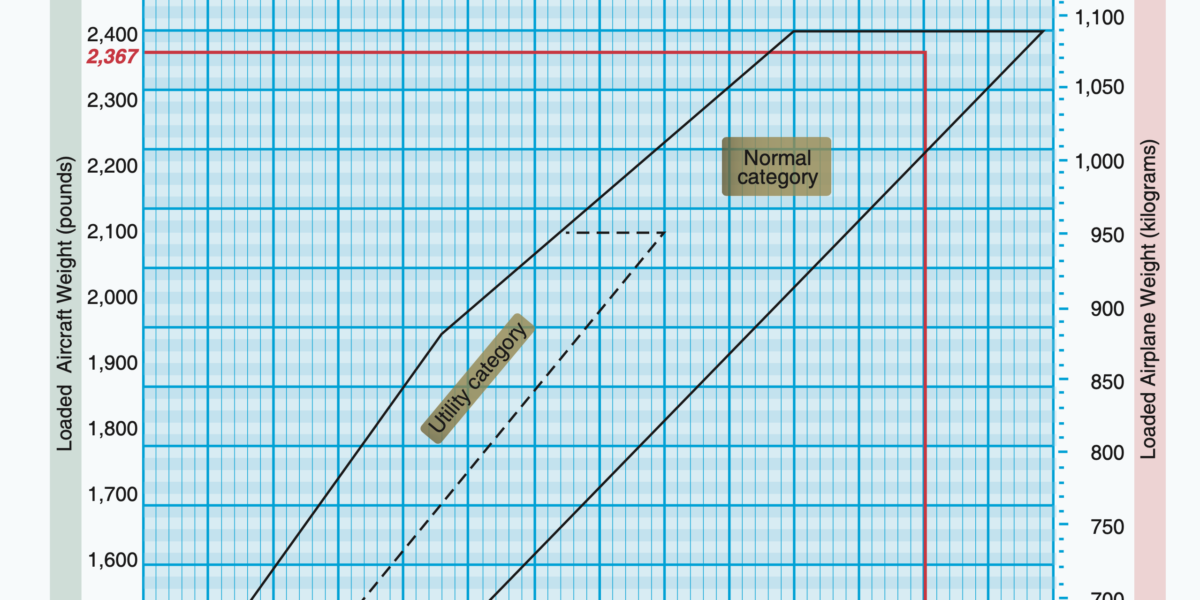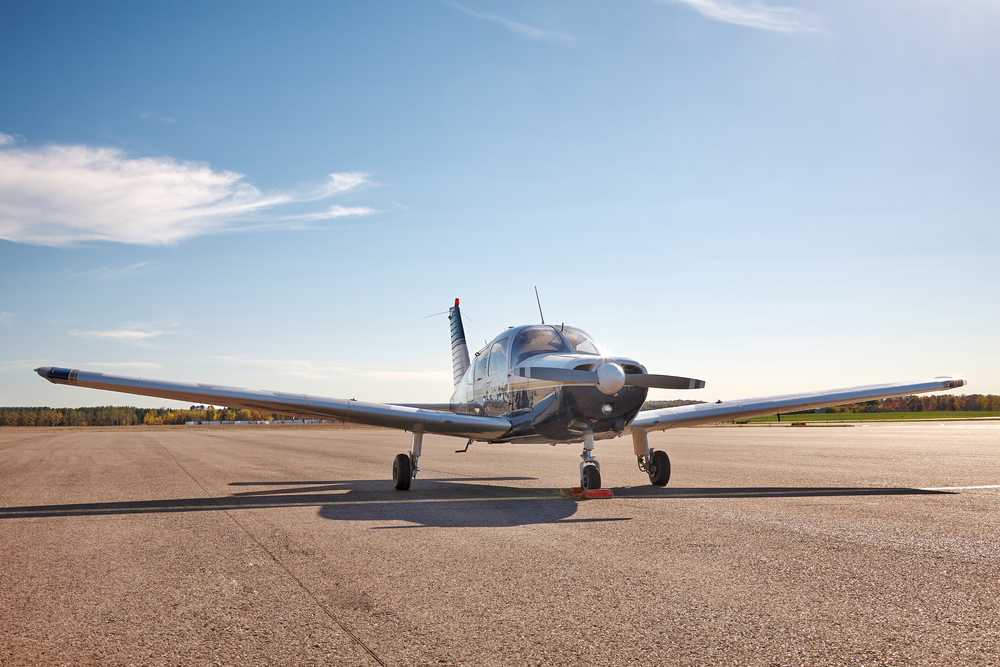Understanding aircraft weight and balance prevents accidents and ensures legal compliance. Overloaded aircraft have reduced performance, while improper center of gravity placement affects controllability. Every pilot must calculate weight and balance before flight, though many skip this critical step. Mastering these calculations takes practice but becomes routine with experience.
Quick Answer: Weight and balance ensures the aircraft operates within approved gross weight limits and CG (center of gravity) range. Calculate by multiplying each item’s weight by its arm (distance from datum), then dividing total moment by total weight to find CG location. Plot the result on the aircraft’s weight and balance envelope. Overweight aircraft won’t perform as published; aft CG reduces stability and stall speed increases; forward CG requires more elevator force and reduces elevator effectiveness.
Basic Concepts and Definitions
The datum is an imaginary vertical plane from which all horizontal distances are measured. Most aircraft use the firewall or nose as the datum. The arm is the horizontal distance from the datum to any item measured in inches. Moment is weight multiplied by arm, representing the tendency to rotate around the datum. Center of gravity is the point where the aircraft balances, calculated as total moment divided by total weight.
Empty weight is the aircraft with full oil but no fuel or occupants. Useful load is maximum gross weight minus empty weight—the capacity for fuel, occupants, and baggage. Basic empty weight includes full oil and unusable fuel. Standard empty weight excludes optional equipment. Maximum gross weight is the highest weight authorized for flight. Maximum ramp weight may exceed gross weight by fuel burned during taxi and runup.
How to Calculate Weight and Balance
Start with the aircraft’s empty weight and empty weight moment from the weight and balance records in the aircraft documents. List each item you’re adding: pilot, passengers, baggage, and fuel. Find the arm for each item from the aircraft’s POH. Multiply each weight by its arm to get the moment. Sum all weights to get total weight. Sum all moments to get total moment.
Divide total moment by total weight to find the center of gravity location. Compare this CG to the approved CG range shown in the aircraft’s weight and balance envelope graph. The envelope shows approved weight versus CG combinations. If your plotted point falls inside the envelope, the aircraft is legal to fly. Outside the envelope means you must adjust loading before flight.
Example Calculation
Cessna 172 empty weight: 1,500 pounds, empty moment: 108,000 pound-inches. Pilot (200 pounds, arm 37 inches): moment = 7,400. Front passenger (180 pounds, arm 37 inches): moment = 6,660. Rear passengers (300 pounds total, arm 73 inches): moment = 21,900. Baggage (50 pounds, arm 95 inches): moment = 4,750. Fuel (40 gallons at 6 pounds per gallon = 240 pounds, arm 48 inches): moment = 11,520.
Total weight = 1,500 + 200 + 180 + 300 + 50 + 240 = 2,470 pounds. Total moment = 108,000 + 7,400 + 6,660 + 21,900 + 4,750 + 11,520 = 160,230. CG = 160,230 / 2,470 = 64.9 inches. Check the POH: maximum gross weight is 2,550 pounds (within limits). CG range at 2,470 pounds is 35-47.3 inches. The calculated CG of 64.9 inches is AFT of the limits—this loading is ILLEGAL. You must reduce rear passenger or baggage weight or move weight forward.
Effects of Forward CG
Forward CG increases longitudinal stability—the aircraft resists pitch changes and returns to trimmed speed quickly. However, excessive forward CG requires more elevator force to flare during landing. Stall speed decreases slightly because the tail produces downforce. Cruise speed decreases due to increased tail download creating drag. The aircraft may be unable to flare adequately for landing if CG is too far forward.
Nose-heavy aircraft are difficult to rotate on takeoff. Elevator effectiveness diminishes—you may not have sufficient elevator authority to level off from a steep descent. Fuel consumption increases due to higher drag. However, forward CG within limits improves stability and reduces stall/spin tendency. Many pilots prefer slightly forward CG for IFR flying stability.
Effects of Aft CG
Aft CG reduces longitudinal stability—the aircraft becomes more sensitive to pitch inputs. Cruise speed increases slightly due to reduced tail download and drag. Stall speed increases because of the reduced tail force. Spin recovery becomes difficult or impossible as elevator effectiveness decreases. The aircraft may become impossible to control in turbulence.
Tail-heavy aircraft stall suddenly with little warning. The nose pitches up easily, making turbulence control difficult. Slow flight becomes dangerous as the aircraft wallows unpredictably. Recovery from unusual attitudes becomes challenging. Aft CG is more dangerous than forward CG—many fatal accidents result from aft CG loading. Always stay well within limits, preferably avoiding the extreme aft portion of the envelope.
Fuel Weight Changes In Flight
Burning fuel during flight changes both weight and CG. Most aircraft have wing tanks, so burning fuel moves CG forward (tanks are typically aft of the forward CG limit). Calculate weight and balance at departure with full fuel and at landing with reserve fuel remaining. Both conditions must remain within the envelope.
Some aircraft have multiple fuel tanks affecting CG significantly. The Cessna 206, Piper Aztec, and many twins have nose or auxiliary tanks. Burning fuel from different tanks changes CG location. The POH provides fuel moment change per gallon burned from each tank. Update weight and balance calculations as you burn fuel from specific tanks. Improper fuel management can move CG out of limits during flight.
Electronic Weight and Balance Tools
ForeFlight, Garmin Pilot, and similar apps include weight and balance calculators. Enter your aircraft’s specific data from the POH. The app stores arms and weight limits, calculating CG automatically. The graphical display shows whether you’re within the envelope. These tools eliminate math errors and speed calculations dramatically.
However, understand the manual calculation process before relying on apps. Verify the app’s data matches your aircraft’s POH exactly. Apps sometimes contain generic data not matching your specific aircraft. Electrical failures or iPad malfunctions can leave you without the app—knowing manual calculations ensures continued operations. Use apps as tools but maintain proficiency with paper calculations.
Common Loading Mistakes
Pilots often underestimate passenger and baggage weights. Use actual weights rather than guesses—people underestimate their weight by 10-30 pounds typically. Forget to include baggage, survival gear, and tools. Neglect to account for heavy avionics installations that changed empty weight from POH numbers. Fail to verify empty weight has been updated after modifications or equipment changes.
Loading all passengers in rear seats creates aft CG problems. Placing maximum baggage with full fuel exceeds gross weight. Using outdated weight and balance documents after equipment changes. Assuming “it flew before so it’s fine” without calculating current load. Each flight requires a fresh calculation—yesterday’s safe loading may be illegal today with different passengers or baggage. Make weight and balance calculations routine before every flight to prevent accidents and develop good airmanship habits.
Join the Aircraft Insider Community
Get exclusive backcountry flying tips, aircraft reviews, and Western aviation destinations delivered to your inbox.
✈️ No spam, ever. Unsubscribe anytime. Privacy respected.




Leave a Reply